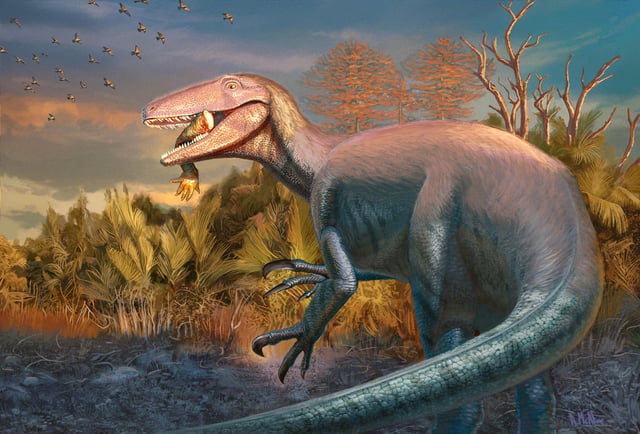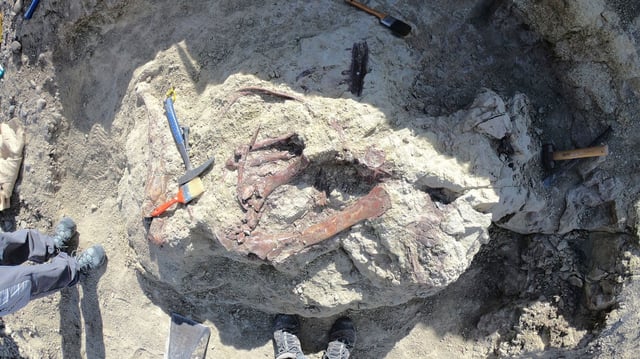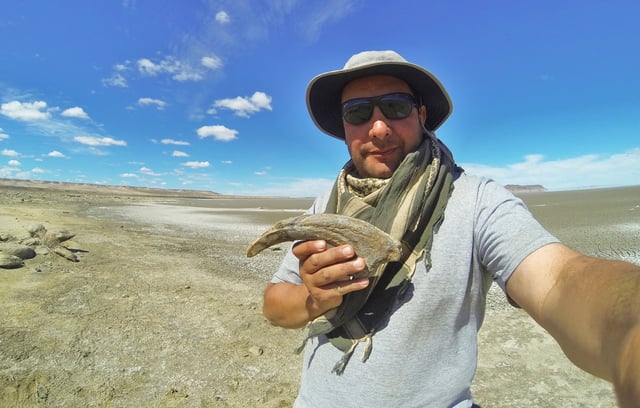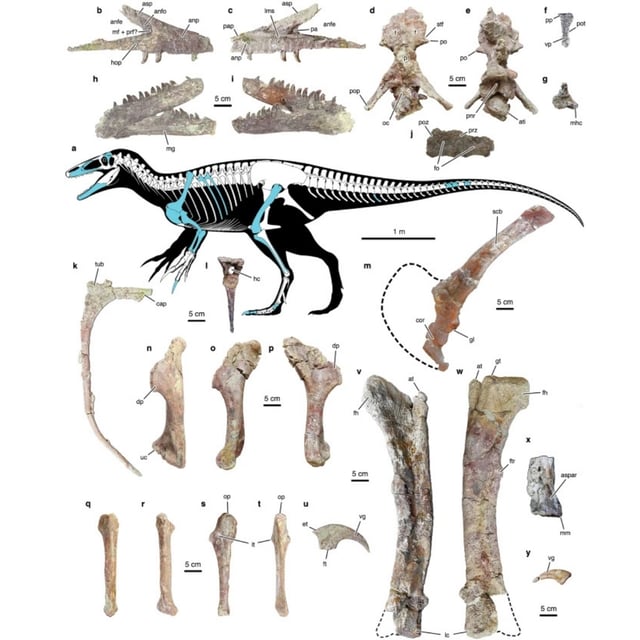Overview
- Researchers formally named and described Joaquinraptor casali on Sep. 23 in Nature Communications from a partially articulated skeleton in the Lago Colhué Huapi Formation of Chubut, Argentina.
- The specimen preserves much of the skull, limbs, ribs, and vertebrae, ranking among the most complete and latest-surviving megaraptorans.
- A crocodyliform humerus was found pressed between the lower jaws and contacting teeth, suggesting possible feeding at death yet remaining unproven given alternative taphonomic explanations.
- Bone microstructure indicates an adult at least 19 years old, about 7 meters long and over 1,000 kilograms, from a warm, humid floodplain near the end of the Cretaceous.
- Robust forelimbs with hypertrophied claws bolster the view that megaraptorans occupied apex-predator roles in southern Gondwana, with further CT and comparative analyses anticipated to refine diet and phylogenetic placement.



